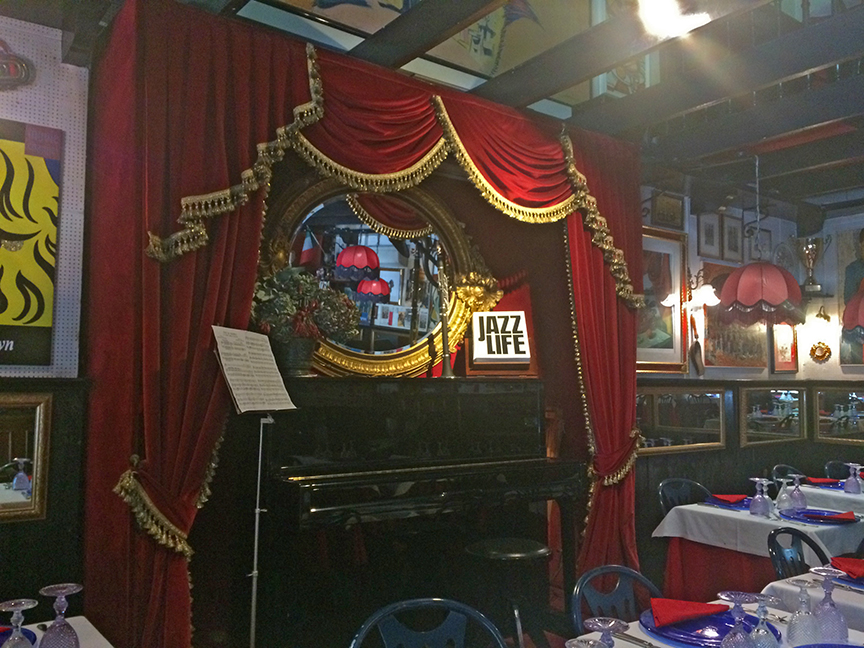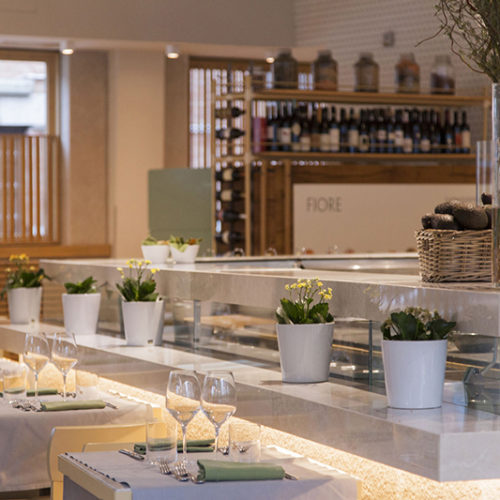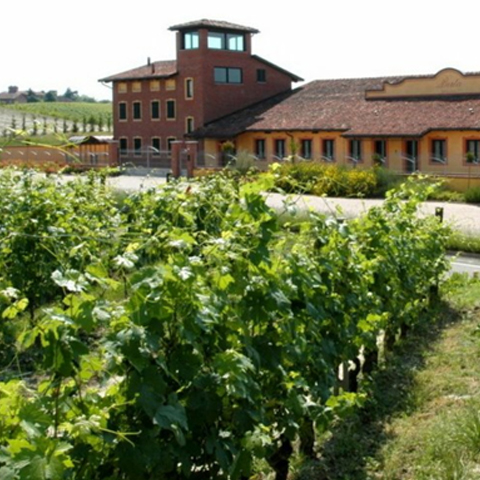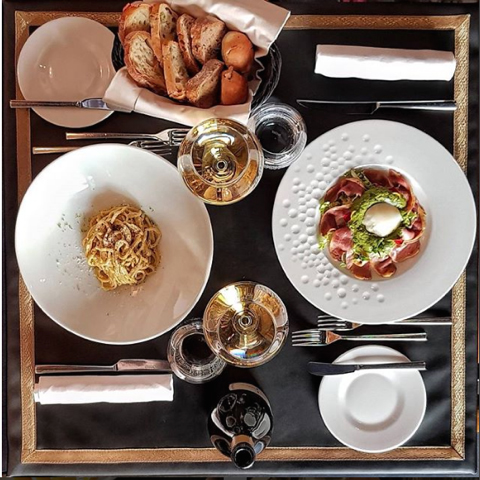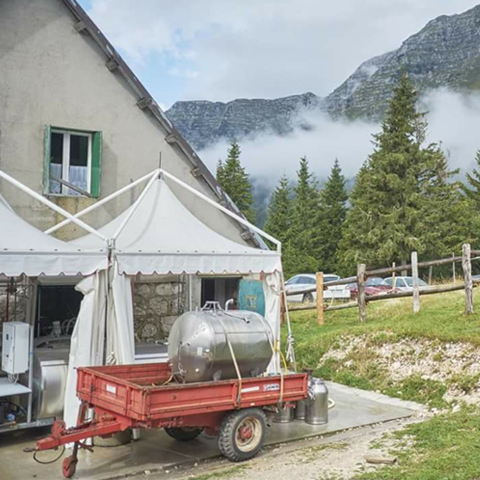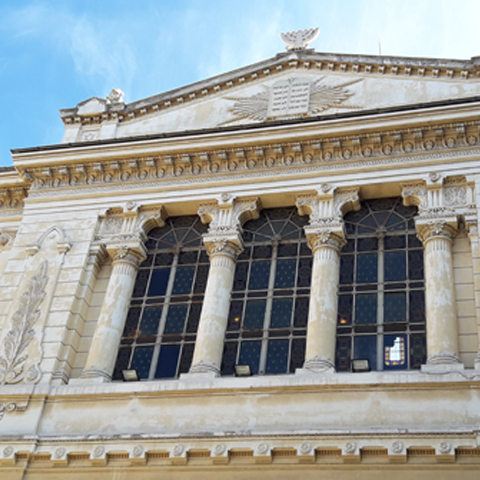Just a side step from the main shopping strip, Via del Corso, lays Via Margutta. A quiet street with a color palette of earthy terracotta brown, amber and orange. Trailing ivy and wisteria plants climb across the stone buildings and give the road a secret garden feel. The rushed pace of the city center, which in reality is just moments away, is easily forgotten in this tranquil stretch of Rome.
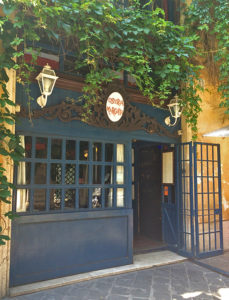 In the middle of this street is a restaurant with a slightly quirky style; its bold red and blue furnishings are distinctly different to their surroundings and yet fit perfectly in place. This restaurant happily coexists with the other independent and artisan boutiques, showrooms and shops on this historic street.
In the middle of this street is a restaurant with a slightly quirky style; its bold red and blue furnishings are distinctly different to their surroundings and yet fit perfectly in place. This restaurant happily coexists with the other independent and artisan boutiques, showrooms and shops on this historic street.
I’m at Osteria Margutta to meet owner and manager, Andrea Tidei. There has been a restaurant in this spot since 1965, but it has been part of Tidei’s family for the past 22 years. He tells me about his particular vision for the osteria:
“My mission is to try to present this restaurant the way it is now. There are a lot of restaurants in Rome and they’re all the same – you enter one and it seems like you’ve seen all of them. So I want to keep this structure which has a mix of different things added over the years.” We take a look inside so Tidei can show me exactly what he means.
The first owner was a theatre manager and so the building took on some of those characteristics. Luxury-red curtains, with golden tassels frame a black upright piano, played over the years by the occasional passing musician or diner in the mood to rattle out a tune. Beside the piano a music stand displays the score of Inno di Mameli, the Italian national anthem.
The walls are lined with knick-knacks, memorabilia and other treasures collected by the owners. Tidei points out one of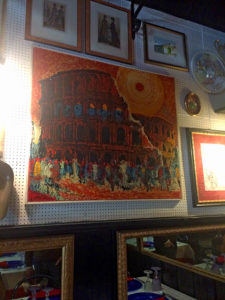
his latest acquisitions; an antique trumpet he picked up at a flea market. A partition wall made of welded-together horseshoes provides us with a clue to the fact that the building was once used as a stable.
Added to the already eclectic mix are a number of paintings by Mario Titi, a local artist who lived in nearby Frascati, and who happened to be a relative of Tidei. His ‘drip painting’ style didn’t involve any brushes or tools and resulted in bright, distinctive canvases that are mesmerizing to examine up close.
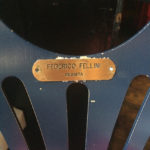 Over the years, this offbeat environment has attracted a number of high profile names, the most famous of which is Federico Fellini. The film director and his wife, Giulietta Masina lived just a quick stroll away at the end of Via Margutta, and so the couple used to dine in this space frequently.
Over the years, this offbeat environment has attracted a number of high profile names, the most famous of which is Federico Fellini. The film director and his wife, Giulietta Masina lived just a quick stroll away at the end of Via Margutta, and so the couple used to dine in this space frequently.
Tidei shows me the spot inside by the window were Fellini would often sit, fixed upon the chair is a small plaque bearing the director’s name. Dotted across the restaurant are a handful of other plaques reading the names of influential customers past and present. It’s more tasteful than the formulaic owner-celebrity handshake photo, and what’s more, at Osteria Margutta celebrities must have a real connection to the place in order to earn a plaque, something more than just a flying visit made whilst jet setting around the world.
With so much to discover about the decor, it’s heartening to learn that equal thought has been put into the food. The traditional Roman classics of amatriciana and carbonara feature on the menu, but they’re not the main attraction here. Tidei explains to me that a number of dishes are old family recipes, food he remembers eating as a child.
I opt for a pasta dish which his Nonna used to serve up in the family kitchen; fusilli in a slightly creamy ragù sauce with cinnamon. I can’t resist trying something new and I’m not disappointed. The addition of cinnamon isn’t a bold flavor, but 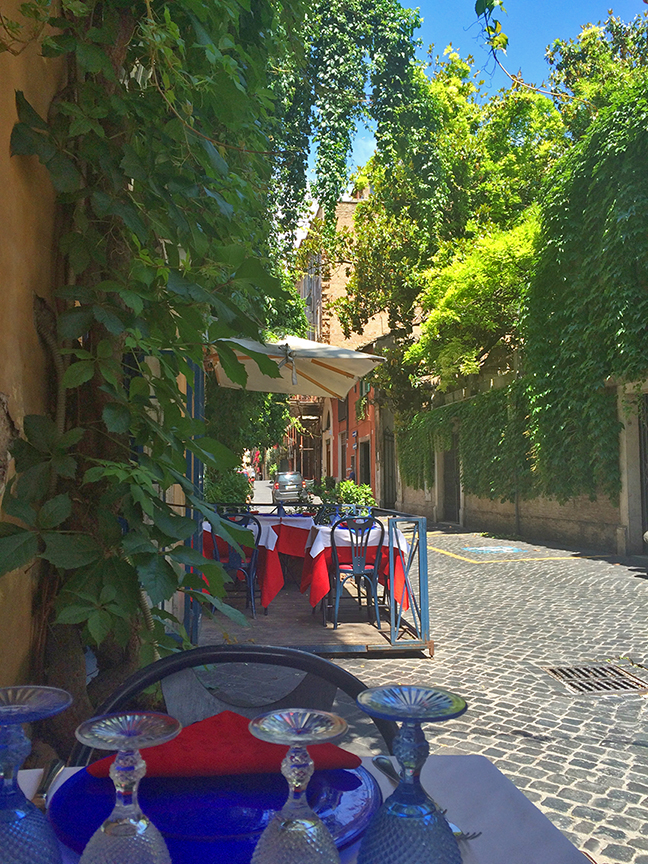 more of a background hum, a complement to the savoriness of the meat. I have no problem polishing off the plate.
more of a background hum, a complement to the savoriness of the meat. I have no problem polishing off the plate.
As we approach the summer months, menu development is underway. Soon customers at Osteria Margutta can expect some lighter, seasonal dishes; beef carpaccio, more seafood and a sunnier version of cacio e pepe made with local wild mint; mentuccia romana.
Wines from Lazio, guanciale from nearby Viterbo and local cheeses all appear on the menu. Tidei is clearly as conscientious in choosing ingredients as he is about running the rest of the establishment. I ask him just what it is that keeps the customers returning.
“We’re such a mix of different things. You might come here because of the history or because of the structure of the building. You might want to come here because the atmosphere is so warm, the service is very personal, or maybe you want to try our cuisine. There are so many reasons why. It’s difficult to choose.”
Osteria Margutta
Via Margutta, 82
06 3231025
www.osteriamargutta.it
